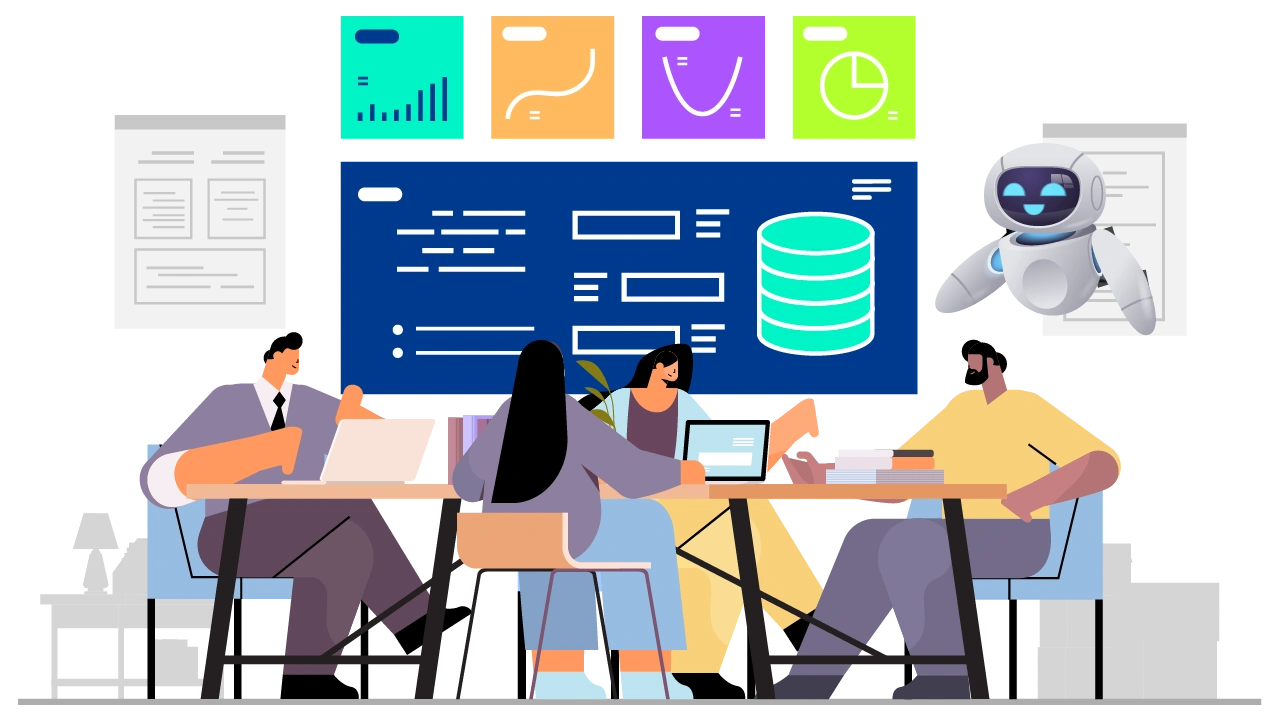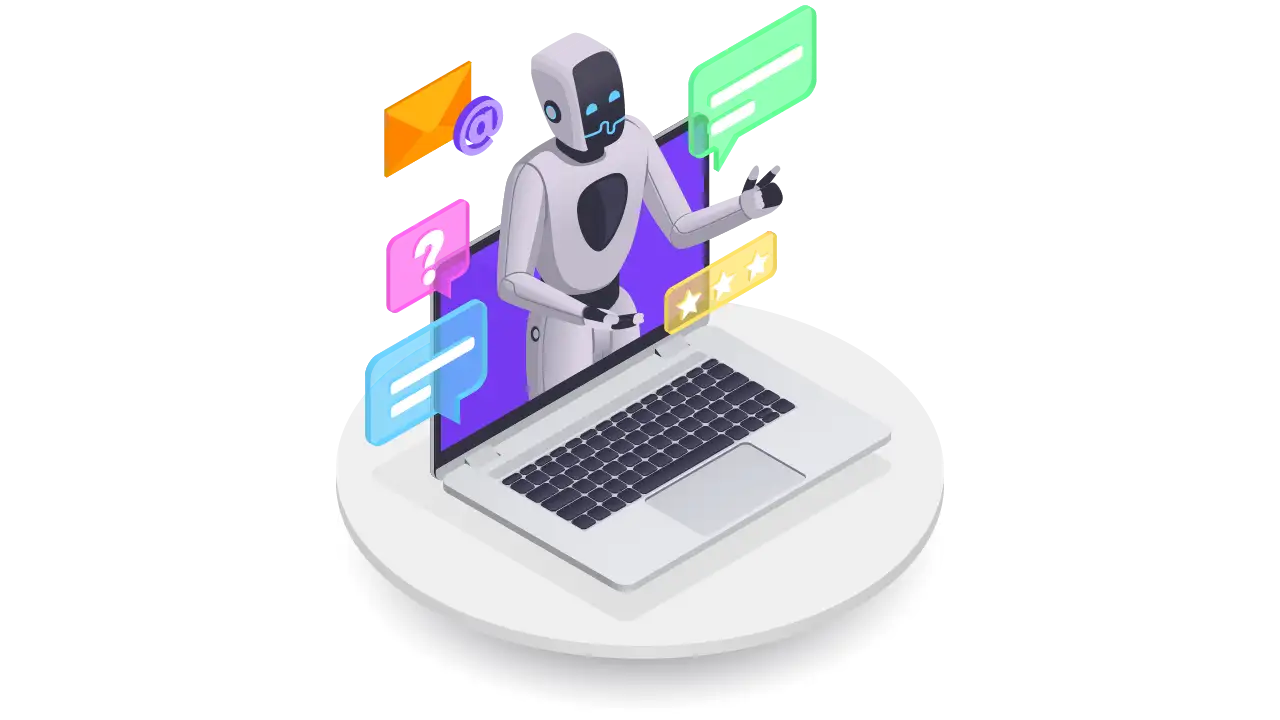


In an era defined by rapid technological advancements, evolving workforce dynamics, and unprecedented global challenges, cultivating a robust and positive organizational culture has become paramount for sustained business success. This white paper delves into a comprehensive framework for automating employee culture survey analysis using AI-driven HR analytics. By seamlessly integrating sophisticated data mapping, AI-powered sentiment analysis, and real-time dashboarding, organizations can achieve a granular, accurate, and actionable understanding of their workplace culture. This approach enables data-driven decision-making, personalized action plans, and continuous cultural improvement, fostering a resilient and thriving workforce.
The contemporary business landscape is characterized by volatility, uncertainty, complexity, and ambiguity (VUCA). This VUCA world is not a theoretical concept but a lived reality for organizations across the globe. Disruptive technologies like artificial intelligence, automation, and blockchain are rapidly transforming industries, rendering traditional business models obsolete. Shifting consumer preferences, driven by increasing awareness of social and environmental issues, are forcing companies to rethink their value propositions. Unforeseen global events, such as pandemics, economic crises, and geopolitical instability, can disrupt supply chains, alter market dynamics, and create unprecedented challenges.
In this context, employee culture transcends mere "soft skills" and emerges as a critical strategic asset. A positive, inclusive, and aligned culture fosters employee engagement, drives innovation, enhances productivity, and ultimately strengthens an organization's competitive edge. It provides the social glue that holds an organization together, enabling it to adapt to change, overcome adversity, and achieve its goals.
The COVID-19 pandemic, in particular, has profoundly reshaped the workplace, accelerating the adoption of remote and hybrid work models. This sudden shift has introduced new challenges related to maintaining team cohesion, fostering a sense of belonging, and ensuring effective communication. Employees who were once connected by physical proximity now find themselves dispersed, relying on technology to collaborate and interact. This can lead to feelings of isolation, decreased engagement, and a weakening of the social fabric of the organization.
Moreover, the growing emphasis on diversity, equity, and inclusion (DEI) has underscored the need for organizations to create inclusive environments that value and respect individual differences. Employees are no longer willing to work in organizations that tolerate discrimination, bias, or a lack of fairness. They demand workplaces where they feel safe, respected, and empowered to bring their whole selves to work.
At this pivotal juncture, traditional methods of culture survey analysis are inadequate. They are often time-consuming, prone to human bias, and lack the granularity needed to identify nuanced cultural trends and implement targeted interventions. This paper presents an automated framework that leverages the power of AI to streamline the process, providing deeper insights and facilitating proactive culture management, essential for navigating the complexities of the modern business environment.
Several key factors contribute to the increasing importance of culture surveys in today's business environment:
2.1 The War for Talent: In a highly competitive global market, attracting and retaining top talent is crucial for organizational success. A strong, positive culture is a key differentiator that can make an organization more attractive to prospective employees. Culture surveys provide valuable insights into what employees value and what they are looking for in an employer, enabling organizations to tailor their culture to attract the best and brightest.
2.2 The Rise of the Employee Experience: Organizations are increasingly recognizing that employee experience is just as important as customer experience. Employees who feel valued, engaged, and supported are more likely to be productive, innovative, and loyal. Culture surveys provide a mechanism for measuring employee sentiment and identifying areas where the employee experience can be improved.
2.3 The Need for Agility and Adaptability: In a rapidly changing business environment, organizations need to be agile and adaptable to survive and thrive. A strong culture can foster a sense of shared purpose and enable employees to embrace change, take risks, and innovate. Culture surveys can help organizations assess their adaptability and identify cultural barriers to change.
2.4 The Importance of Diversity, Equity, and Inclusion: DEI is no longer just a social imperative but also a business imperative. Organizations with diverse and inclusive cultures are more innovative, creative, and profitable. Culture surveys can help organizations measure their progress on DEI, identify areas where they are falling short, and develop strategies for creating a more inclusive workplace.
2.5 The Impact of Remote and Hybrid Work: The shift to remote and hybrid work has created new challenges for maintaining organizational culture. Culture surveys can help organizations understand how remote work is affecting employee engagement, communication, and collaboration, and develop strategies for fostering a sense of connection in a distributed workforce.
2.6 The Focus on Mental Health and Well-being: The pandemic has brought increased attention to the importance of employee mental health and well-being. A positive culture can provide employees with a sense of support, belonging, and psychological safety, which can help to mitigate stress and improve overall well-being. Culture surveys can help organizations assess the impact of their culture on employee mental health and identify areas where they can provide more support.
2.7 Globalization and Cultural Diversity: As businesses expand globally, they encounter a greater diversity of cultural backgrounds, values, and norms. Culture surveys can help organizations understand these differences and adapt their practices to create inclusive and harmonious work environments across different locations. This is crucial for effective global collaboration, minimizing misunderstandings, and maximizing the potential of a diverse workforce.
2.8 Mergers and Acquisitions: During mergers and acquisitions, the integration of different organizational cultures is a critical success factor. Culture surveys can be used to assess the compatibility of the merging cultures, identify potential areas of conflict, and guide the integration process to minimize disruption and maximize synergy.
2.9 Ethical Considerations and Corporate Social Responsibility: Today's employees and customers are increasingly concerned about ethical behavior and corporate social responsibility. A strong ethical culture is essential for building trust, maintaining a positive reputation, and attracting and retaining stakeholders. Culture surveys can help organizations gauge the extent to which ethical values are embedded in their culture and identify any areas where improvements are needed.
The proposed framework is meticulously structured into four distinct phases, creating a culture-centric ecosystem that fosters continuous improvement: Design & Mapping, Administration, AI-Driven Analysis, and Real-Time Dashboard & Reporting.
This phase focuses on establishing a robust foundation for the survey by defining cultural values, mapping them to organizational structures, and creating a comprehensive survey question directory. This ensures the survey is aligned with the organization's unique context and yields actionable data.
3.1.1. Mapping Organizational Culture & Subcultures:
3.1.2. Mapping Grades & Priority Scores:
3.1.3. Mapping Department-Level Priorities:
3.1.4. Mapping Role Families & Priorities:
3.1.5. Mapping Tenure-Based Priorities:
3.1.6. Aligning Culture with Vision, Mission & Business Goals:
3.1.7. Creating a Directory of Survey Questions:
This phase focuses on efficient survey distribution and data collection, maximizing participation and ensuring data accuracy.
3.2.1. Smart Survey Distribution:
3.2.2. Survey Rollout via Chat Interface:
3.2.3. Open-Ended Response Collection & Data Storage:
This phase leverages AI to analyze survey responses and extract meaningful insights, transforming raw data into actionable intelligence.
3.3.1. Sentiment Scoring for Each Response:
3.3.2. Relevance Score Calculation:
3.3.3. AI Score for Each Response:
This phase provides actionable insights through interactive dashboards and automated reports, empowering decision-makers with real-time data.
3.4.1. AI-Powered Dashboard:
3.4.2. Automated Summary & Findings:
The automated survey can reveal a wide range of trends, categorized into five key areas, providing a comprehensive understanding of organizational culture.
The data can be visualized across various dimensions (Business Unit, Gender, Manager, Tenure, Age Range, Role Family, Department), providing clear insights and actionable recommendations. (See the visualizations and action items in the original response).
Following the identification of trends, organizations can implement targeted interventions:
It is crucial to remember that a culture survey is not a one-time event but an ongoing process. Organizations should use the results of the survey to drive continuous improvement, track progress over time, and adapt their strategies as needed.
Automating employee culture survey analysis with AI-driven HR analytics empowers organizations to gain a deeper, more accurate understanding of their workplace culture. This approach facilitates data-driven decision-making, personalized interventions, and continuous cultural improvement, ultimately driving organizational success in an increasingly complex and dynamic business landscape. By prioritizing culture, organizations can build a resilient and thriving workforce, capable of navigating challenges and seizing opportunities, and ultimately creating a sustainable competitive advantage. In today's world, a strong organizational culture is not just a "nice-to-have" but a fundamental requirement for survival and success.

Organizations operating in distributed, high-volume, or high-variability environments, such as HR shared services...

As the digital landscape evolves, data-powered organizations are gaining a competitive edge. Data has become the new currency...

The world of work is evolving at an unprecedented pace, and outplacement and workforce transition consulting...

The workplace is rapidly evolving at an unprecedented pace. As organizations navigate a landscape increasingly influenced by artificial intelligence...

Artificial Intelligence (AI) isn’t just some sci-fi fantasy anymore—it’s really changing the way companies work today...

In today’s fast-paced business world, People Analytics is reshaping the way organizations attract, engage, and retain talent...